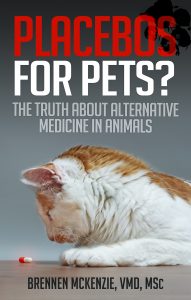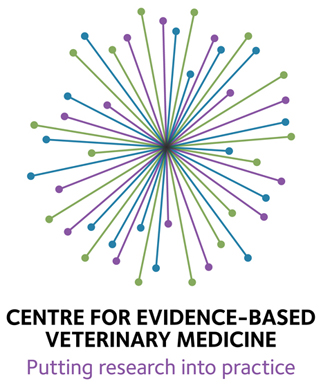I recently received an email promoting one of the strangest therapies I’ve looked into while writing this blog—leeches.
10 FACTS HOW LEECHES HELP DOGS!
1. Leeches a new wave in alternative animal medicine?
No way! Over 3000 years ago leeches have been successfully used in medicine. One knew relatively little about the origin of their healing effectiveness, but that they had a positive effect was why they were used. They were mostly used for arthritis, gout, varicose veins, for sepsis prophylaxis and above all for handling wounds. Today, their use is not used less by any means, but the knowledge about their use has largely been established.
2. What makes these little helpers stand out?
The medical leech — Hirudo Medicinalis — belongs to the family of ring worms (annelid) and has a head and a tail with suction cup, with which he can hold on perfectly tight. With the head end he sucks the blood. His jaws are fitted with approx. 80 small chalky teeth, which saw through the skin and create a small wound. The blood that is taken in is separated into firm components and blood plasma still while in the sucking process. A grown leech can absorb 20 and 50 ml of blood whereby he is then plumply full and shines in wonderful colors. He now is full and is pretty much full for the next 2 years.
3. How does the leech function?
The saliva of the leech is a mystery. When attaching, when sucking and when releasing the leech injects saliva into the wound. In this saliva there are a lot of substances that enter the wound and also in the entire organism. Of the suspected 30 to 100 saliva secretions only very few can be named. The known substances act as anticoagulants and anti-inflammatory. They have a bacterial, antibiotic and pain reducing effect.
4. What can be treated?
There is a number of indications for leech therapy. Abscesses, ear hematomas, poorly healing wounds, lymphatic blockages are only a small part of the area of application. This holds true: Who heals is right. Important is always, that the one handling the indication has adequate knowledge for the therapeutic treatment.
5. How does the leech affect arthritis?
The leech can be effectively employed for arthritis therapy. Even for chronic arthritis they can be excellently used. Placed goal-oriented they minimize the arthritis pain and the dog is then capable of moving the affected joint. Due to the additional blood flow to the joint a better transport of sludge is guaranteed. Moreover this physical movement leads to definitive measures in reducing pain. If an ossification during the arthritis is present, the treatment with leeches speeds up the process. Due to this the stiff joint is then pain free.
6. What must be mandatory to address?
Prior to any treatment a comprehensive case history has to be taken by the therapist. By only knowing the medical history, the current status of the health and the knowledge concerning the eventual necessary medicines can a decision be made, if the treatment is indicated or if it is contra-indicated.
7. What are the contra-indicators?
Anemia, poor blood coagulation, diabetes mellitus, fever, histamine allergy, leukemia, malignant tumors, stomach ulcers are some of the contra-indicators. Medicines that are blood thinners, also lead to leeches not being used. Certain pain medications cause blood thinning and should not be used three days before treatment.
8. How often is the treatment required?
First and foremost this is based on the presented indication. There are cases where only one treatment is necessary to achieve an effective healing. With arthritis often several treatments are necessary in using the leeches. The span of using them becomes greater after each use, as the dog becomes free of pain and more mobile.
9. How does the dog handle the treatment?
Yes, actually very well. Dogs often no longer react to the bite of the leech and many dose off during the treatment. Also the secondary hemorrhaging is not a problem, which is different with other wounds, where here the dog does not even try to lick the wound. Secondary hemorrhage can last up to 36 hours and should not be stopped by applying a pressure bandage. That would cause bleeding into the wound itself and that should be avoided at all costs.
10. Who is permitted to apply this treatment?
The therapy with leeches is subject to very clearly defined legal guidelines. Acquiring medicinal leeches can only be done through pharmacies. They are considered drugs and acquiring them and utilizing them by a therapist has to be documented. The usage of leeches is not to be underestimated — the healing effectiveness is enormous — but the risks are not to be underestimated. Treatment should only be done by one who is certified and trained.
From:the German magazine “Hunde Welt” May 2013 edition
Apart from the little quirks introduced by translation, this article sounds pretty strange. However, even the most superficially odd therapies deserve to be evaluated with an open mind, so I took a deeper look into the veterinary use of leeches. As is so often the case with therapies promoted by alternative medicine practitioners (which is where this article came from), there is a foundation of real science upon which a rather shaky structure has been built.
What is Leech Therapy?
Historically, leeches were used as part of the pre-scientific folk medicine of various cultures. The most common use was to remove blood, which was thought to be helpful in balancing the “vital humors” in the model of humoral medicine which dominated European medical thinking from classical times into the 19th century and which is connected with other pre-scientific medical systems such as Ayurvedic Medicine and so-called Traditional Chinese Medicine. The humoral system, unfortunately, represents one of the most popular and enduring mistakes in the history of medicine, and the notion that bloodletting, by leech or any other method, is a beneficial therapy is nonsense for all but a couple of rare and exotic conditions (such as polycythemia).
The notion, then, that the ancients, in their wisdom, knew of the benefits of leech therapy and that modern science is merely rediscovering this knowledge, is a fairy tale. Because it fits with the general narrative and ideology off much alternative medicine, which values intuitive and historical knowledge more than rational and scientific knowledge and which often seeks to validate therapies by reference to historical use when science fails to support their value, alternative medicine proponents frequently tell this myth of ancient wisdom rediscovered in the modern age. If a chemical in a plant is found to have medicinal value, for example, a narrative will be created in which ancient folk use of that plant is characterized as having identified this value long ago. This is not, however, generally consistent with historical reality. Most herbal remedies have been used ineffectively for dozens of different problems in various cultures around the world. The coincidental correspondence of one such use with a modern scientific discovery doesn’t mean the ancients knew what they were doing, and it doesn’t explain the far more numerous historical uses which were ineffective or even actively harmful.
Science may discover therapies in places where the ancients looked, as well as in places they never considered. It will also, far more often, discover that pre-scientific theories were mistaken and that therapies based on these theories were ineffective or dangerous. Ultimately, historical use can, at most, suggest a subject for scientific investigation. It cannot serve as a validation of any particular therapy since most medical practices invented throughout history have failed to improve health and have been justly forgotten or, in a few unfortunate cases, remodeled and marketed as “alternative medicine.”
As science began to demonstrate that bloodletting did more harm than good, and that health and disease were not determined by the balance of mystical humors or body fluids, leech therapy went out of style. However, scientific evaluation of leech therapy continued and did manage to discover that more than simply removing a small amount of blood, leeches impact circulation through both their feeding and through a complex and poorly understood collection of chemicals they secrete into the patient. These include substances which prevent blood clotting and which may help break down clots, allowing blood collected in a space or in small vessels to drain freely. There may also be anti-inflammatory and analgesic substances in the leech saliva, but the clinical importance of these is not well understood.
In conventional human medicine, leeches are an established therapy in reconstructive surgery, used to treat congestion of blood in veins which can hamper the healing of wounds, skin grafts, and re-attached body parts. There is also some use for arthritis pain and hematomas, pockets of blood that accumulates in tissue, usually associated with trauma. The veterinary use of leeches generally follows the use in humans, though as always with unconventional therapies some people recommend them for a wide range of unrelated and bizarre uses, such as treatment of epilepsy, abscesses and neurologic disorders, “detoxification,” and other more implausible indications.
Does It Work?
The use of leeches in reconstructive surgery is widely accepted in human medicine, and there is some research evidence to support it. A systematic review of 277 cases concluded:
The overall reported “success” rate following leech therapy was 77.98% (216/277). In terms of secondary outcome measures, 49.75% of cases (N = 101) required blood transfusions, 79.05% received antibiotics (N = 166) and 54.29% received concomitant anticoagulant therapy. The overall complication rate was 21.8%.
The cases reviewed were not generally from randomized controlled trials, and a wide variety of surgical problems, different methods of using the leeches, and combinations with other treatments were present in these cases. Without any controls for differences in aspects of the clinical problem and of the other treatments given, it is impossible to be certain that successful outcomes were more or less likely with leech therapy. If, for example, leeches are primarily tried in healthier patients with fewer risk factors for failure of the surgical procedure than in patients not treated with leeches, the leeches might be associated with better outcomes even if they had no effect or even reduced the real success rate. In the absence of better evidence, however, these reports provide at least some tentative support for the practice.
Similarly, there is some evidence to support the use of leeches in osteoarthritis treatment in humans. A 2012 systematic review found three randomized clinical trials including 237 patients and concluded:
This systematic review found moderate to strong evidence for the reduction of pain, functional impairment, and joint stiffness after medical leech therapy in patients with osteoarthritis of the knee. Given the low number of reported adverse events, leech therapy may be a useful approach in treating this condition. Further high-quality RCTs are required for the conclusive judgment of its effectiveness and safety.
The review includes only a few studies, very few patients, and the same kind of subjective measures of outcome that always bedevil studies of therapies for treatment of pain, but it provides at least preliminary evidence to suggest leeches might have some value in treating arthritis pain in humans. Of course, even if leeches can reduce pain, comparative studies of this practice versus other established therapies would need to be done to show that the benefit is significant and the risk small enough to make this a reasonable alternative or adjunct to existing therapies.
As usual, there are no published clinical trials for veterinary patients investigating the safety or efficacy of leech therapy. Use in dogs, cats, and horses is based entirely on extrapolation from use in humans and a small number of case reports and uncontrolled anecdotes. It is therefore plausible but entirely unproven that this therapy could have benefits in veterinary patients.
Is It Safe?
It cannot be repeated often enough that you can’t get something for nothing in medicine. If leech therapy has benefits, it is going to have costs as well. Because the body fluids of leeches come into contact with the blood of the patient, leeches are a great vehicle for the transmission of disease. Because of this, the leeches used must be specially raised medical leeches. This biggest risk of leech therapy appears to be infection.(3-4) Infections have been reported in anywhere from 2.% to 20% of patients treated with leeches, and serious complications, including death, have been seen. Any patient with a comrpmised immune system is at increased risk and probably should not have leech therapy. Leeches can also transmit disease between patients if inappropriately used on more than one patient.
Another potential risk is excessive blood loss. While leeches themselves only consume small quantities of blood, the wounds they make can continue to bleed for anywhere from a few hours to a couple of days. In patients with anemia or with a reason to have imperfect clotting ability, significant loss of blood can occur and blood transfusions may be required.
The direct cost of medical leeches are not high, but they require very specific conditions and care, so the cost of leech therapy can easily be more than $100 per leech. And the procedure can take up to 45 minutes, during which time the patient must be relatively still in order not to disturb the leech, which might detach or regurgitate its stomach contents into the patient’s bloodstream.
Because of some of the risks and inconveniences of this practice, research is being done to identify potential alternatives to leech therapy that might be as or more effective and have fewer disadvantages.(5)
Bottom Line
The historical medical uses of leeches were irrational and almost certainly ineffective and unsafe. However, science has discovered a few potential uses for specially raised medical leeches.
There is moderate evidence to support the use of leech therapy to reduce venous congestion and promote healing in surgical graft, reattachment, transplant, and wound care procedures in humans. There is weak evidence to support some pain relief in human patients with arthritis, though this research has not effectively controlled for placebo effects or compared leech therapy with other established treatments.
There is no controlled research evidence evaluating leech therapy in companion animals for any indication. Anecdotal evidence exists suggesting benefit for the same conditions in which leeches are used in humans.
There are a number of risks to leech therapy, including infection and excessive blood loss. And the therapy is relatively costly and can be inconvenient.
Overall, there is some reason to believe leech therapy may be useful in certain kinds of reconstructive surgery for veterinary patients and might provide some pain relief for patients with arthritis, though this remains unproven and supported mostly but extrapolation from limited evidence in humans and anecdote. There is no good evidence to support any other suggested use for leeches in veterinary patients.
References
1. Iain S. Whitaker, Omar Oboumarzouk, Warren M. Rozen, Naghmeh Naderi, S.P. Balasubramanian, Ernest A. Azzopardi, Moshe Kon. The efficacy of medicinal leeches in plastic and reconstructive surgery: A systematic review of 277 reported clinical cases. Microsurgery. 2012;32(3):240-50.
2. Lauche R, Cramer H, Langhorst J, Dobos G. A Systematic Review and Meta-Analysis of Medical Leech Therapy for Osteoarthritis of the Knee. Clin J Pain. 2013 Feb 26. [Epub ahead of print]
3. BS Porshinsky, S Saha, MD Grossman, PR Beery II, SPA Stawicki. Clinical uses of the medicinal leech: A practical review. Journal of Postgraduate Medicine. 2011;57(1):65-71.
4. Tiene G. M. Bauters, Franky M. A. Buyle, Gerda Verschraegen, Karen Vermis, Dirk Vogelaers, Geert Claeys, Hugo Robays. Infection risk related to the use of medicinal leeches. Pharmacy World & Science. June 2007, Volume 29, Issue 3, pp 122-125
5. Azzopardi EA, Whitaker IS, Rozen WM, Naderi N, Kon M. Chemical and mechanical alternatives to leech therapy: a systematic review and critical appraisal. J Reconstr Microsurg. 2011 Oct;27(8):481-6. doi: 10.1055/s-0031-1284233. Epub 2011 Jul 21.









